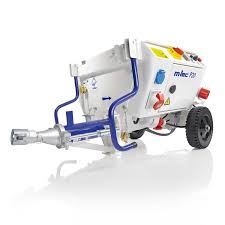Maximizing the Benefits of Tile Adhesive: Tips and Tricks for Proper Installation
When it comes to tiling, the success of the installation largely depends on the quality of the tile adhesive used. Tile adhesive is a crucial component that ensures the tiles remain firmly in place and resist any movement or damage. Tile adhesive can also make the tiling process quicker, more efficient and cost-effective.
However, for optimal results, it’s essential to use the right type of tile adhesive and apply it correctly. In this article, we will share some tips and tricks for maximizing the benefits of tile adhesive and achieving a flawless tiling installation.
Choosing the Right Tile Adhesive
There are many types of tile adhesive available in the market, such as cementitious, epoxy, and acrylic-based adhesives. Cementitious tile adhesive is the most commonly used and is a cost-effective option for most tiling applications.
It’s important to choose a tile adhesive that’s compatible with the type of tile being used and the substrate it’s being applied to. For example, a cementitious adhesive may not be suitable for porcelain tiles or walls with high moisture content. In such cases, an epoxy-based adhesive may be a better option.
Preparing the Substrate
Before applying the tile adhesive, it’s crucial to prepare the substrate properly. The substrate should be clean, dry, and free of any contaminants such as dust, oil, or grease. Any loose material or debris should be removed, and the surface should be leveled.
For better adhesion, the substrate can be coated with a keycoat, which is a primer that helps the tile adhesive bond to the surface. Keycoats can be applied using a brush or roller and should be left to dry for the recommended time before applying the tile adhesive.
Mixing the Tile Adhesive
Tile adhesive should be mixed according to the manufacturer’s instructions. It’s essential to mix the adhesive thoroughly to ensure all the components are evenly distributed. Over-mixing or under-mixing can affect the adhesive’s consistency and reduce its strength.
Using a Gypsum Plaster Machine
A gypsum plaster machine can be used to mix tile adhesive quickly and efficiently. These machines have a mixing drum that can prepare large batches of tile adhesive in a short amount of time. Gypsum plaster machines can also reduce the amount of manual labor required and ensure a consistent mix every time.
Applying the Tile Adhesive
Tile adhesive can be applied using a trowel or notched trowel. The size of the trowel and the type of notches will depend on the size and type of tile being used. For example, larger tiles may require a larger notched trowel to ensure adequate coverage and adhesion.
It’s important to apply the adhesive evenly and consistently, ensuring there are no gaps or air pockets. The adhesive should be applied in small sections, starting from the center and working outwards. This will ensure that the adhesive is spread evenly and the tiles are aligned correctly.
Allowing for Drying Time
Once the tile adhesive has been applied, it should be left to dry for the recommended time before applying the tiles. The drying time will depend on the type of adhesive, the ambient temperature, and the humidity levels.
It’s important not to rush the drying process as this can compromise the adhesive’s strength and reduce the tiles’ lifespan. Adequate drying time will also ensure that the tiles are firmly bonded to the substrate and will not move or crack over time.
Using Cement Plaster for Grouting
Once the tiles have been installed, the gaps between them can be filled with grout. Cement plaster is a popular option for grouting as it’s durable, water-resistant, and can be colored to match the tiles.
Cement plaster should be mixed according to the manufacturer’s instructions and applied using a rubber float. The grout should be pressed into the gaps between the tiles, ensuring that there are no gaps or air pockets. Any excess grout should be wiped away using a damp sponge or cloth.
It’s important to allow the grout to dry completely before using the tiled surface. This can take up to 24 hours depending on the humidity levels and temperature. Once the grout is dry, the tiles can be cleaned using a damp cloth or mop.
Maintenance of Tiled Surfaces
Proper maintenance of tiled surfaces is essential for maintaining their appearance and durability. Regular cleaning with a mild detergent and water can help to remove any dirt or grime that has accumulated on the surface. It’s important not to use abrasive cleaners or tools as these can scratch or damage the tiles.
If any tiles become loose or damaged, it’s important to address the issue immediately to prevent further damage. Loose tiles can allow water to seep behind them, leading to mold or water damage. Replacing damaged tiles or reapplying tile adhesive can prevent further damage and ensure the tiled surface remains intact.
Conclusion
Proper installation of tile adhesive is essential for achieving a flawless and durable tiled surface. Choosing the right type of adhesive, preparing the substrate, and applying the adhesive evenly are all crucial steps in the tiling process. Using a gypsum plaster machine can make the mixing process quicker and more efficient, while using cement plaster for grouting can provide a durable and water-resistant finish.
By following these tips and tricks, you can maximize the benefits of tile adhesive and ensure a successful tiling installation. Proper maintenance of the tiled surface can also extend its lifespan and keep it looking its best for years to come.
